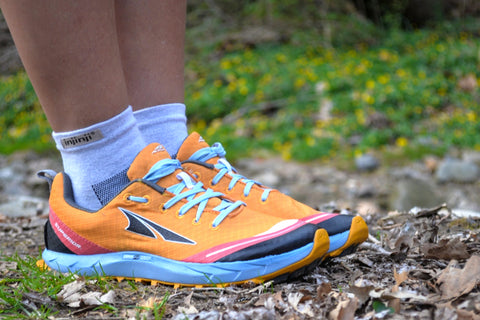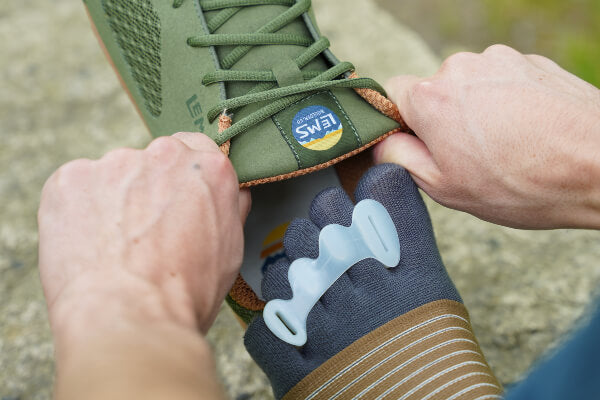
Definition
Diabetes: A metabolic condition involving the inability to generate insulin and elevated blood sugar levels.
General Info
Diabetes is a chronic, or lifelong, condition in which the body is unable to maintain proper blood sugar levels. Foot problems are among the most common health concerns diabetics face. Several types of diabetes exist, yet they all may cause similar changes in the feet. Prolonged elevated blood sugar levels may lead to a serious health complication known as neuropathy—nerve damage or dysfunction. The nerves in the feet perform many important functions, and they may be particularly susceptible to diabetes-related damage.
Diabetic neuropathy can cause significant foot health problems and often affects the following foot functions:
-
Position Sense (Proprioception): Proprioception is the ability to determine where one’s body parts are in space. Proprioception is dependent on having intact position sensors. Elevated blood sugar levels can damage the body’s position sensors, making it difficult for a person with this problem to know where his or her feet are in relation to the ground or within their shoe. Diabetics may damage their feet or other body parts because they’re unable to properly adapt to varying terrain.
-
Sensation: Most diabetics experience “pins and needles” sensations or burning in their feet and legs about one year before numbness sets in. The numbness usually begins at the ends of the toes and progresses up into the feet. Because of this numbness, a diabetic may be unable to feel if his or her shoe is rubbing on the foot or if an object has fallen into his or her shoe and is causing foot damage. Diabetics who suffer foot nerve damage may also be unable to appreciate how hot his or her bath water is or how hot the sand at the beach is. Going barefoot is strongly discouraged for this reason.
-
Sebum Production: The body’s sebaceous glands produce an oily substance called sebum that helps lubricate skin and hair. The production of sebum in the foot, and therefore the moisture level of the foot, is controlled by nerves. Nerves will lose their ability to regulate the amount of moisture in the foot's skin if they are damaged by prolonged elevated blood sugar levels. Nerve damage in the feet makes the skin more susceptible to cracking and rubbing from shoes.
-
Vasodilation: Vasodilation is a medical term that describes a widening of the blood vessels, due to the relaxation of the vessels’ muscular wall. Nerves, if damaged by diabetes, may lose their ability to regulate the amount of blood flowing into the foot, which causes the mineral content of bones to be washed away, rendering bones weak and brittle.
-
Intrinsic Foot Muscle Strength: Intrinsic foot muscles are the muscles located within the foot and which do not cross the ankle joint. Optimal stimulation of the foot's nerves is lost when these nerves are damaged, causing the toes to contract. This is also a serious problem because the full force of a person’s bodyweight is now concentrated on the ball of the foot, which a diabetic is unable to feel. Over time, the forces on this part of the foot may cause skin breakdown and ulceration. Ulcers are among the leading causes of hospital admissions, intravenous antibiotic use, and amputations in diabetics.
Signs & Symptoms
Common signs and symptoms associated with diabetes include:
- Fatigue
- Weight loss
- Vision changes
- Frequent infections
- Extremity sores that are slow to heal
- Increased thirst, hunger, and urination
Neuropathy is the most significant problem associated with diabetic feet, although immune deficiency, decreased circulation, and other problems may also accompany this health problem.
Diabetic individuals are particularly susceptible to fungal and yeast infections of the feet, especially the toenails. Important signs of infection include:
- Heat
- Redness
- Swelling
- Foul odor
- Pain (although pain is not a reliable indicator of infection in diabetics)
Possible Causes
Lack of physical activity in combination with chronic consumption of high glycemic index foods (i.e., sugary foods that cause spikes in blood sugar levels) is the most common cause of diabetes (at least, Type 2 diabetes). Certain factors may increase a person’s likelihood of developing diabetes, including:
- Age
- Ethnicity
- Sedentary lifestyle
- Elevated blood pressure
- Excessive body weight (obesity)
- A family history of this condition
Helpful Strategies
Numerous treatment methods may be helpful in controlling diabetes and reducing diabetics’ chances of developing diabetic neuropathy.
Controlling high blood sugar levels is the most important factor in reducing the chances of diabetic neuropathy. Long-term tests such as Hemoglobin A1c or Fructosamine will help determine how well controlled a diabetic’s sugars have been and allow a diabetic to rate the effectiveness of whatever protocol he or she is following to keep blood sugar levels in check.
Diabetics should examine their feet every day, especially the underside of the foot and between the toes. A family member or caregiver should examine a diabetic’s foot if he or she has poor vision. Any blisters, cracks, redness, swelling, or other signs should be noted and reported to the diabetic’s doctor as soon as possible.
Diabetics should avoid walking barefoot, even in their own house. Certain objects may become embedded in the feet, including sewing needles, and a diabetic may not experience a pain sensation to warn them of the damage that's occurring. Also, diabetics should avoid applying lotion between the toes, as this can increase the likelihood of infection, particularly from fungus (athlete’s foot).
Diabetics should be very careful when selecting and using footwear. Tight-fitting shoes are one of the most common causes of blisters and ulcers in diabetics. Diabetics who are covered by Medicare are entitled to one free pair of shoes per year and three free inserts made of a material called plastizote, which helps protect numb feet.
Setting and maintaining regular examinations with a physician are another important consideration for diabetics. Periodic reduction of long, thick toenails by a foot care professional greatly reduces the chances of ingrown toenails and subsequent infection. Proper nutrition and weight loss are also encouraged as part of an overall well-being program for diabetics.

WANT TO IMPROVE YOUR FOOT HEALTH?
Let the team at Natural Footgear help you! Subscribe to our newsletter for the latest offers and helpful info, and sign up for our FREE email courses on various topics and foot health conditions.
Sign Up →
Want to Improve Your Foot Health?
We are here to help you every step of the way. Get our newsletter for the latest offers and helpful info, and sign up for our FREE email courses on various topics and conditions, including bunions, hammertoes, neuromas, plantar fasciosis, shin splints, ingrown toenails, and more.
Sign Up →
 The human circulatory system is made up of a pump (the heart) and a delivery system (the blood vessels) for transporting blood throughout the body. The two types of circulation in the body are called systemic circulation and pulmonary circulation. Systemic circulation is responsible for bringing fresh, oxygen-rich blood to all the body’s tissues and organs, while pulmonary circulation is responsible for carrying oxygen-depleted blood from the heart to the...
Read more
The human circulatory system is made up of a pump (the heart) and a delivery system (the blood vessels) for transporting blood throughout the body. The two types of circulation in the body are called systemic circulation and pulmonary circulation. Systemic circulation is responsible for bringing fresh, oxygen-rich blood to all the body’s tissues and organs, while pulmonary circulation is responsible for carrying oxygen-depleted blood from the heart to the...
Read more






I am an overweight diabetic closely monitoring my blood glucose. After 2 visits to emergency room for what was thought a stroke, my neurologist said no stroke symptoms appeared in the many tests I had. My bg has dropped 100 points and now ready to do some walking exercises. Any suggestions?
Hello, Barbara,
Thank you for your response. We are always in encouragement of physical activity well-monitored by your local practitioner. Remembering to pace yourself is important; keep listening to the signals your body gives you, and you are on the right track! We are applauding your steps to feeling your best, guided by your happiest, healthiest feet.
This page details some of the most effective foot health exercises and stretches that could work nicely in combination with your new walking regimen:
www.naturalfootgear.com/blogs/education/17915320-top-exercises-for-feet-toes
You might continue to peruse our online resources to see what speaks to you as you continue on your journey. Thank you for inviting us along!
Kindest regards,
Sarah K. Schuetz